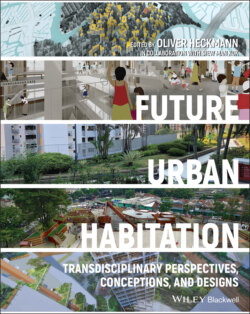Читать книгу Future Urban Habitation - Группа авторов - Страница 34
2 Link by Link: Blurring the Lines and Creating an Inclusive Society in Singapore
ОглавлениеVincent Chua
Department of Sociology, National University of Singapore, Singapore
Lisa Joy, the American screenwriter, co‐creator, and executive producer of HBO's science‐fiction series, Westworld, decided to film the show's third season in Singapore, saying in an interview with Channel News Asia: ‘Your architecture is so spectacular and quite singular and unique. There is a poetic shape to the skyline of Singapore that no other city has. There is a beautiful curvature to it that is really unique and interesting.’ In the same interview, she declared: ‘We need to create a world of fiction that was immersive, new, beautiful, gripping and fascinating. Looking outside the window at Singapore right now, where else would we go after seeing this?’ (Channel New Asia, 11 July 2019). This chapter is about that city.
Looking beyond the stunning skyline, breathtaking architecture, and beautiful greenery which, in isomorphic fashion, have become standard features in many other global cities (Khondker 2005; Charney 2007; Beatley 2011), I argue that an ‘inclusive urbanism’, by which I mean the melding of diverse social groups and cultures into a loosely integrated whole (Granovetter 1973), is critical to the present and future success of Singapore. And not just of Singapore – of all global cities.
At the level of everyday life, global cities stand out for the possibilities they create for human interactions. For one, they are heterogeneous; situated at the confluence of global flows of people, goods, and capital, they bring different peoples, cultures, and ideas together (Castells 1996). For another, they have critical mass and density, creating opportunities for intercultural contact (Sassen 1991; Batty 2018). But do these opportunities translate into actual social ties? And how can cities of the future ensure peace, cohesion, and conviviality in the midst of diversity?
This chapter identifies a challenge and offers a solution. The challenge is the polarization manifesting in mature economies, with a growing social divide between class groups – the (global) elites and the rest (the so‐called 1% versus the 99%) (Beaverstock 2002; Hayes 2012; Khan 2012). Responding to this challenge, I propose three ways to foster an inclusive society amidst forces of fragmentation. First, the establishment of common frames of reference has the potential to unite diverse groups. Second, the promotion of voluntary associational life contributes to social learning, sociability, and a more extensive connectivity between sectors of society. Third, the intentional building of personal communities based on the principles of diversity can produce, as the eventual outcome, a more inclusive and cohesive society manifesting as a shared sense of national belongingness.
